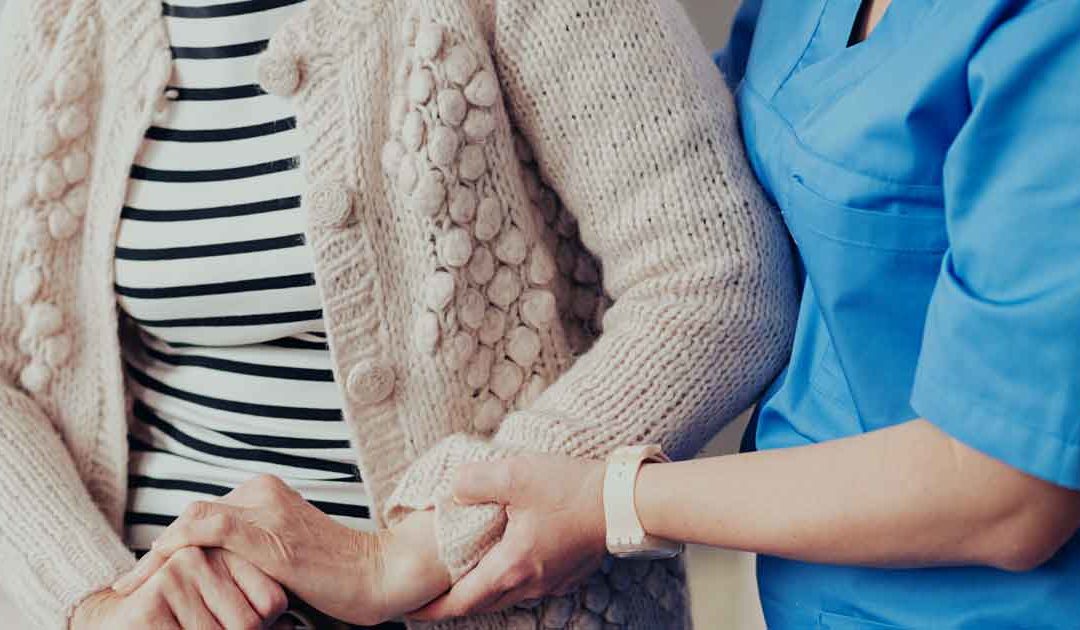
by California Casualty | Nurses |
If a natural disaster strikes your community, what will you do?
As a nurse, your first instinct is to help. Whether you work at a school, a hospital, or clinic setting, your skillset is uniquely valued during an emergency. Here’s how you can help your patients cope after a natural disaster.
What types of natural disasters can you expect in your area?
Different parts of the U.S. are more prone to certain disasters than others, according to Popular Science. You’re more likely to experience wildfires in the western states and snowstorms in the Midwest and northeastern U.S. Tornadoes are common in south-central states while hurricanes often strike along the eastern seaboard. There are earthquakes in the west, and flooding happens pretty much everywhere. Not only do these disasters result in property damage, but they can also cause severe injury and even loss of life. Your nursing skills are much needed to minimize pain and suffering.
Why do nurses play key roles in a disaster?
As a nurse, you are a trusted professional. People look to you for guidance. You not only bring expertise in the medical field, you know how to coordinate care while helping to comfort patients, relieving some of their stress and fear.
In addition, disaster preparedness was likely part of your nursing training. If it wasn’t, or if you need a refresher, consider a disaster certification from the American Nurses Credentialing Center.
What are ways that nurses can help in a disaster?
Nurses play pivotal roles in a disaster, delivering onsite care to the injured. Often working amid chaos and with limited resources, nurses triage patients and administer medical care. If more serious care is needed, nurses help coordinate transport to the nearest hospital. Victims of disaster may experience post-traumatic shock syndrome, and nurses also monitor patients’ mental health and guide them to resources. In addition, nurses help displaced people find temporary shelter and food and get access to prescriptions as needed.
Helping in a disaster is not for everyone. There are potential safety and security threats. There are primitive conditions. There can be a significant time commitment away from your home and family. If you are able to clear your schedule to volunteer, consider the other attributes that will help make you successful in a disaster setting: (1) Your clinical expertise covers a wide range of medical conditions. (2) You are comfortable working in high-stress situations and can work through emotions. (3) You are able to work in rough conditions, perhaps without access to electricity, water and basic supplies. If you have the skills, the time, and the desire, disaster nursing could be right for you.
What is a school nurse’s special role following a disaster?
In addition to helping onsite following a disaster, we can’t forget about school nurses and the roles they play. They deal with the mental and physical effects among students, parents, teachers and staff. For families made homeless by the disaster, or those who need mental health services, a school nurse provides important connections to community resources. Similarly, she connects staff with district resources for mental and physical health.
How can you help your community prepare for a disaster?
You don’t necessarily have to volunteer in a disaster to help your community. You can be there to help prepare for a disaster in advance by assisting hospitals, schools, and towns in the creation of a comprehensive disaster plan.
Nurses can help with community education, leading disaster preparedness clinics, and giving people the knowledge to create their own disaster plans to make it safely through a disaster.
You can utilize resources from trusted organizations in developing the right program for your school, hospital, organization, and community. Consider these resources:
How can you volunteer to help in future disasters?
If you are interested in volunteering your time, make sure you have up-to-date vaccinations for traveling, and be prepared to leave immediately. The following organizations welcome disaster-related nurse volunteers:
This article is furnished by California Casualty, providing auto and home insurance to educators, law enforcement officers, firefighters, and nurses. Get a quote at 1.866.704.8614 or www.calcas.com.
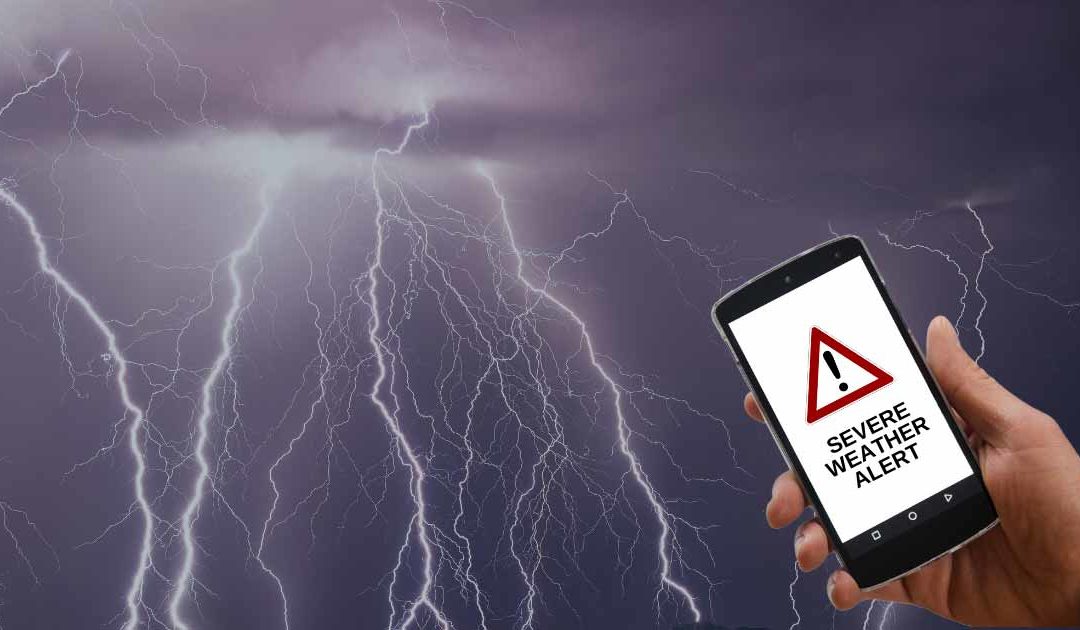
by California Casualty | Safety |
Many things in life come without warnings. But fortunately for us, severe weather isn’t one of them.
Meteorologists are constantly tracking dangerous storms and weather patterns. Tapping into their early warnings is key to protecting your home, your possessions, and your family. Here’s what you need to know to stay one step ahead of Mother Nature.
First, let’s take a look at severe weather.
There are many types of severe weather. Examples include thunderstorms, snowstorms, hail storms, blizzards, hurricanes, tornados, and cyclones. High winds and flooding associated with some of these weather events can do great damage to your home and belongings. Having a disaster plan is great, but knowing when disaster is going to strike is crucial. That’s where early warning systems come in.
Chances are you already have an emergency alert system.
The U.S. government has the capability to send wireless emergency alerts (WEAs) right to our cell phones. Agencies like the National Weather Service and FEMA are among the organizations that can do so. There is no signup required and you are not charged for the data used. Alerts come automatically with a special sound and vibration. Most phones are enabled for these alerts; to find out if your particular model is, check the WEA enabled list or contact your wireless carrier.
Check to see that your phone is enabled for alerts.
WEAs may be free but if your phone isn’t enabled to receive them, you won’t. Fortunately, it’s easy to activate this setting.
Apple (IOS) phones
-
- Go to settings, then notifications.
- Scroll down to government alerts.
- Slide the circle so that it is green for the alerts you want. For severe weather, you will want emergency alerts and public safety alerts.
Android phones
-
- Go to apps & notifications.
- Click on notifications.
- Turn on “allow alerts.”
- Make sure each alert that you want is enabled. For severe weather, you will want extreme threats, severe threats, public safety messages, and state and local tests.
While WEAs are good ways to get information, generally these alerts won’t arrive until there is an emergency. You may find value in getting advance notice.
Other ways to get emergency information:
If you do not have a WEA-capable phone, you can still get critical and timely information from NOAA Weather Radio, local media broadcasts, and the emergency alert system on your TV or desktop and mobile devices. Make sure to tune in if you suspect an impending weather emergency. In addition, your local utility company, township, city or state may offer free alerts. Check with your electric or gas company, and with city hall or municipal government. Find out how to sign up for their free alerts.
There’s an app for that, and it’s free.
You can get advance notice and more robust information by downloading a weather app on your smartphone or mobile device. Here are some popular free options.
-
- AccuWeather: Weather Alerts provides hourly forecasts, news, and updates as well as weather-tracking radar.
- AlertSense offers public safety alerts as well as severe weather warnings. You can set quiet hours so only emergency alerts are sent with sound.
- Emergency: Alerts is free from the American Red Cross. With this app, you can look up Red Cross shelters and alert loved ones you are safe. It also comes with a flashlight, a strobe light, an alarm, and preloaded content on everything from hurricanes to disasters that is accessible without an Internet connection
- FEMA offers real-time weather alerts from the National Weather Service for up to five locations of your choice. It also provides information on storm preparedness and filing a flood claim.
- Storm Shield is free with options for paid upgrades. This app provides alerts in text and voice and tracks conditions in up to 5 locations.
- WeatherBug is free with options to purchase in the app. It offers forecasts in real-time as well as weather maps, and more.
- The Weather Channel for Apple or Android offers live radar updates and local weather forecasts.
Stay one step ahead of Mother Nature with coverage from California Casualty.
No matter how well you prepare for severe weather, unfortunately, sometimes Mother Nature gets the upper hand. That’s why having the correct home insurance coverage is so important. Make sure you and your family are fully protected. For questions on home insurance or ways, you can save on your own insurance policy, call a California Casualty agent today at 1.866.704.8614 or visit our website www.calcas.com.
This article is furnished by California Casualty, providing auto and home insurance to educators, law enforcement officers, firefighters, and nurses. Get a quote at 1.866.704.8614 or www.calcas.com.
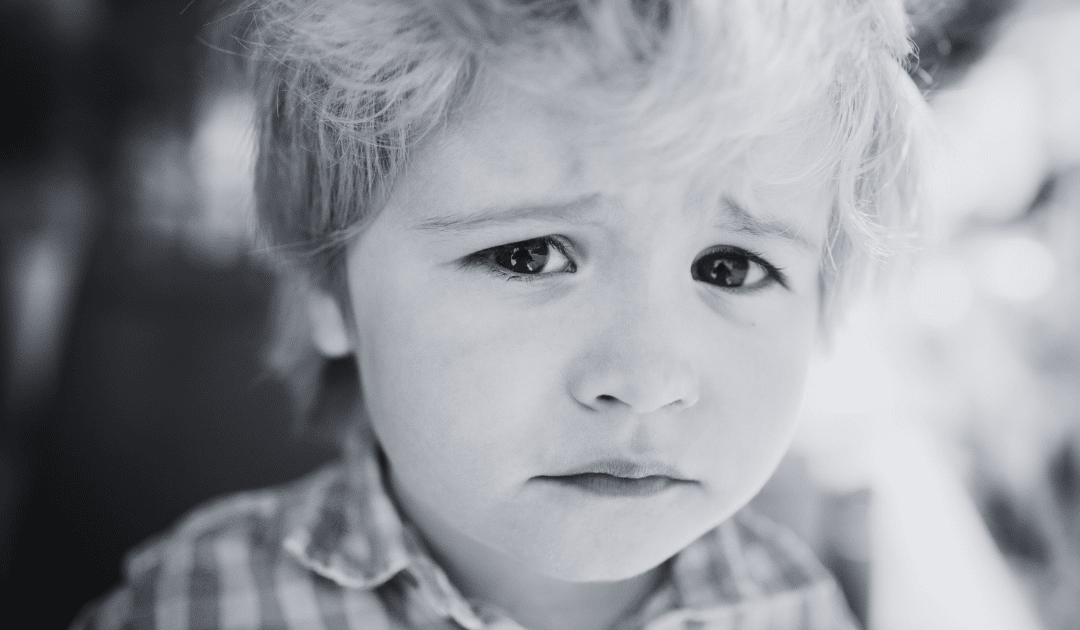
by California Casualty | Safety |
When the power goes out and the cell towers go down, do you have a plan? Do your kids and your ex know what that plan is?
Since disaster doesn’t just strike on alternate weekends, it’s important that you take into account both households when you’re a divorced parent. In honor of September, National Preparedness Month, we’ve compiled a list of everything you need to develop a customized plan in the event of a disaster.
Set aside past feelings and connect with your ex.
You fought over who got the widescreen TV; how are you possibly going to agree on where to go and what to do in a crisis? It’s time to set aside your differences and put your children, and safety, first. You will need to communicate during a disaster, and reaching out to prepare for one is a logical first step. Navigate your situation however it is most effective and set up that important first meeting or call to discuss the plan.
Consider your blended/mixed family’s specific needs.
The ages of your children will determine how much assistance they will need, and how much responsibility they may bear. If family members have medical needs, disabilities, or even special dietary restrictions, that has to be taken into account. Pets also need to be accommodated. List each member of your family—human and animal—and any specific needs they may have.
Determine the responsible party.
Children who are in school or daycare will need to be picked up in the event of a disaster. Pets may need to be secured or transported. Designate a responsible party to pick up children and one who will manage pets. It doesn’t have to be you or your ex, but it’s best to choose a trusted individual known to your family. Make sure that the individual is on the approved pick-up list at school or daycare, and has signed up for alerts. Also, make sure that your child knows who is allowed to pick him/her up.
Create an emergency communications plan.
The power may go out; the cell towers may be down. You may not have access to important information during a disaster. That’s why it’s important to create an In Case of Emergency (ICE) card.
-
- List contact information for each member of both families, caregivers, and any other individuals involved in the disaster plan. This includes work phone, home phone, and cell phone numbers.
- Choose an out-of-state contact to call in the event that your state’s phones and resources are down. That person can act as a main point of contact if you can’t reach each other.
- Starting at about age 5, children can learn a phone number. Teach your child one parent’s cell phone number. Try it as a song to the tune of “Twinkle, Twinkle Little Star.”
- Make sure your older children know your cell phone numbers, and don’t just press “mom” or “dad” on their phones.
- If cell phone service is down, advise your children to follow the guidance of trusted adults such as teachers, school administrators, and caregivers. Reassure them that you will be with them as soon as possible.
- Consider a prepaid phone card for use in an emergency.
Choose an emergency meeting place.
Depending upon the emergency, your home may not be the safest place to take shelter. If that is the case, you will want to choose a place in your neighborhood to meet. The local park, the school, the library, or your place of worship are all familiar and trusted options. If you are able to meet at home, make that the first choice—but be sure to determine whose home it is.
Pack a grab-and-go bag or emergency kit.
If you have to leave suddenly, there’s little time to pack. Having a grab-and-go bag or an emergency kit helps make sure you have everything you need. Pack a bag for every member of your family, including your pets. Include supplies for 3 days: a change of clothes, food, water, medications, hand sanitizer, blankets, etc. You will want a bag at each household, as you don’t know where the children will be when disaster strikes. Also, since children grow, and needs change, make sure you check your emergency kits every three months and update them as needed.
The type of disaster matters.
Severe weather is not the same as an earthquake or a fire. Have a plan for the different types of disasters that may affect your area. For example:
-
- In a hurricane, tornado, or high-wind storm, stay inside your home. Choose a small, interior room without windows, such as a bathroom or closet, on the first level.
- In a fire or evacuation, you may need to leave your home suddenly. If you need to meet, choose a spot in your neighborhood such as a playground, a big tree, or distinctive mailbox.
- In the event of an emergency, make sure the lines of communication are open between you and your ex. Have a plan in place to notify that the children are safe.
Practice, practice, practice.
Make an ICE card with the basics of the plan (including contacts) that can be kept in each adult’s wallet. Include a copy in your school-age child’s backpack. Then, schedule some time to practice the plan with your children. Practice different kinds of emergencies with each parent.
There’s an app for that.
There also are apps that you can use to prepare for an emergency. FEMA offers interactive checklists and emergency safety tips. The Red Cross provides apps specific to hurricanes, tornados, and earthquakes. Plus, the government has some great resources for disaster planning, including games kids can play to get ready.
This article is furnished by California Casualty, providing auto and home insurance to educators, law enforcement officers, firefighters, and nurses. Get a quote at 1.866.704.8614 or www.calcas.com.
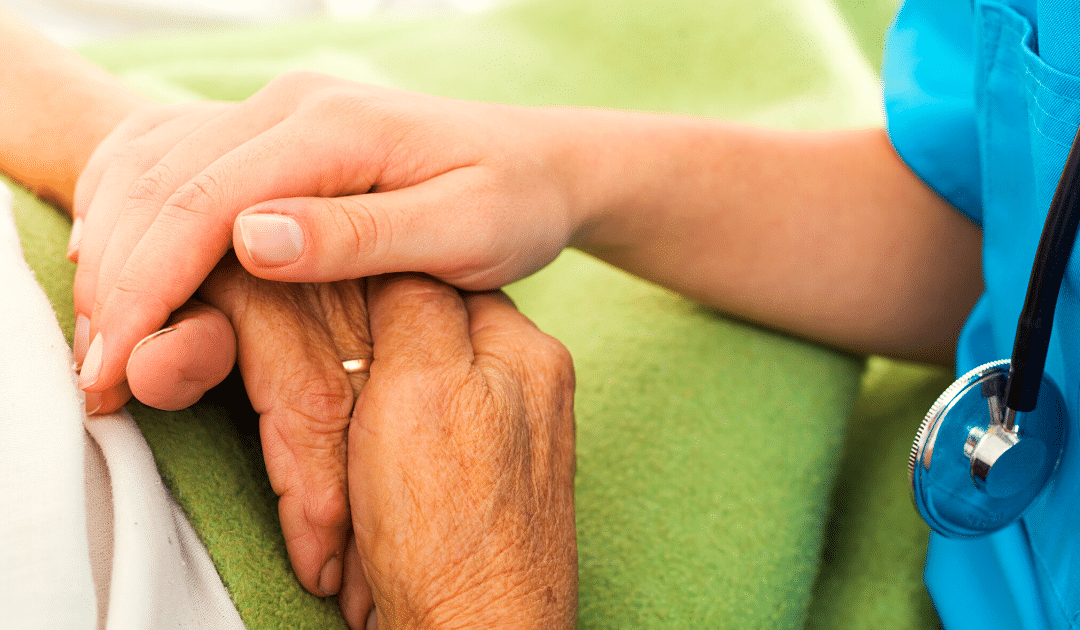
by California Casualty | Nurses |
If a natural disaster strikes your community, what will you do?
As a nurse, your first instinct is to help. Whether you work at a school, a hospital, or clinic setting, your skillset is uniquely valued during a disaster. Here’s how you can help your patients cope after a natural disaster.
What types of natural disasters can you expect in your area?
Different parts of the U.S. are more prone to certain disasters than others, according to Popular Science. You’re more likely to experience wildfires in the western states and snowstorms in the Midwest and northeastern U.S. Tornadoes are common in south-central states while hurricanes often strike along the eastern seaboard. There are earthquakes in the west, and flooding happens pretty much everywhere. Not only do these disasters result in property damage, but they can also cause severe injury and even loss of life. Your nursing skills are much needed to minimize pain and suffering.
Why do nurses play key roles in a disaster?
As a nurse, you are a trusted professional. People look to you for guidance. You not only bring expertise in the medical field, you know how to coordinate care while helping to comfort patients, relieving some of their stress and fear.
In addition, disaster preparedness was likely part of your nursing training. If it wasn’t, or if you need a refresher, consider a disaster certification from the American Nurses Credentialing Center.
What are ways that nurses can help in a disaster?
Nurses play pivotal roles in a disaster, delivering onsite care to the injured. Often working amid chaos and with limited resources, nurses triage patients and administer medical care. If more serious care is needed, nurses help coordinate transport to the nearest hospital. Victims of disaster may experience post-traumatic shock syndrome, and nurses also monitor patients’ mental health and guide them to resources. In addition, nurses help displaced people find temporary shelter and food and get access to prescriptions as needed.
Helping in a disaster is not for everyone. There are potential safety and security threats. There are primitive conditions. There can be a significant time commitment away from your home and family. If you are able to clear your schedule to volunteer, consider the other attributes that will help make you successful in a disaster setting: (1) Your clinical expertise covers a wide range of medical conditions. (2) You are comfortable working in high-stress situations and can work through emotions. (3) You are able to work in rough conditions, perhaps without access to electricity, water and basic supplies. If you have the skills, the time, and the desire, disaster nursing could be right for you.
What is a school nurse’s special role following a disaster?
In addition to helping onsite following a disaster, we can’t forget about school nurses and the roles they play. They deal with the mental and physical effects among students, parents, teachers and staff. For families made homeless by the disaster, or those who need mental health services, a school nurse provides important connections to community resources. Similarly, she connects staff with district resources for mental and physical health.
How can you help your community prepare for a disaster?
You don’t necessarily have to volunteer in a disaster to help your community. You can be there to help prepare for a disaster in advance by assisting hospitals, schools, and towns in the creation of a comprehensive disaster plan.
Nurses can help with community education, leading disaster preparedness clinics, and giving people the knowledge to create their own disaster plans to make it safely through a disaster.
You can utilize resources from trusted organizations in developing the right program for your school, hospital, organization, and community. Consider these resources:
How can you volunteer to help in future disasters?
If you are interested in volunteering your time, make sure you have up-to-date vaccinations for traveling, and be prepared to leave immediately. The following organizations welcome disaster-related nurse volunteers:
This article is furnished by California Casualty, providing auto and home insurance to educators, law enforcement officers, firefighters, and nurses. Get a quote at 1.866.704.8614 or www.calcas.com.
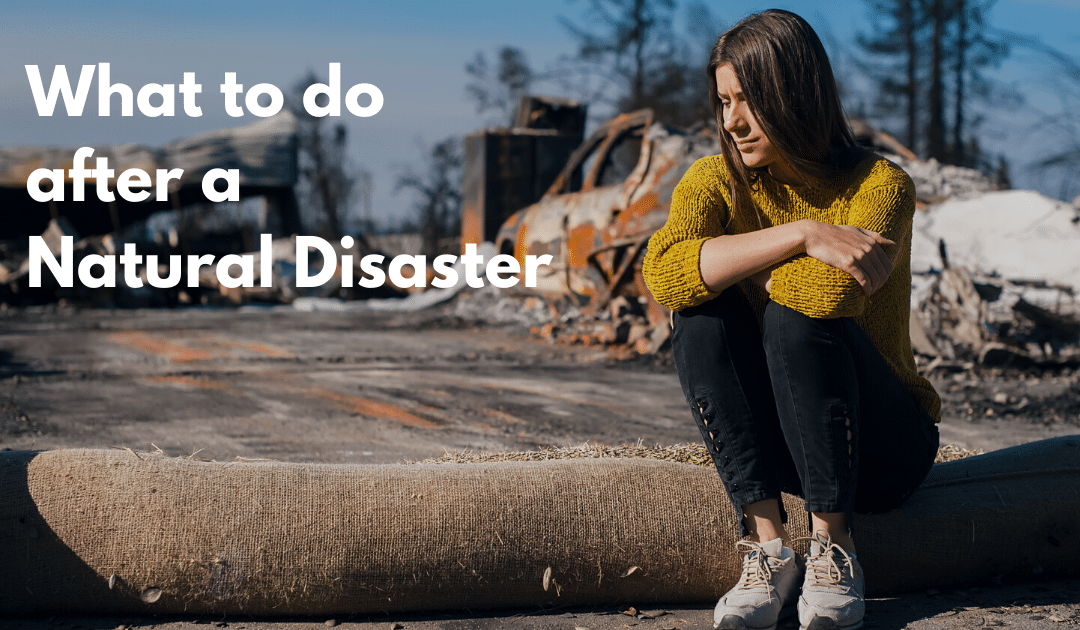
by California Casualty | Good to Know |
Whether it’s a flood, tornado, hurricane or earthquake, a natural disaster can turn your world upside down in a matter of seconds. Besides stress, adrenaline, and fear, there may be injuries to deal with and damage or loss of property. Many people don’t know what to do in the wake of a disaster, which can hinder their coping efforts and recovery.
Here’s a list of the 6 main steps to take immediately following a natural disaster and in the days, weeks, and months that follow.
- Deal with the Immediate Aftermath
-
-
- Make sure all household members are accounted for. If anyone is missing, seek help from first responders.
- Attend to physical injuries or emotional distress. In cases of serious injury, summon professional help.
- If you and your family need to evacuate, follow your family’s evacuation plan, grabbing emergency kits, go bags, and essentials as assigned.
- Notify family and friends that you’re safe. If you can’t connect directly, you can register with FEMA’s emergency family locator online or by calling 1-800-588-9822. See more FCC & FEMA communication tips here.
- Be aware of any new safety issues created by the disaster, such as damaged roads/bridges, chemical spills, downed power lines, and washed-out roads. Inform local authorities if possible.
- Find Temporary Shelter or Housing
-
-
- If your home is damaged and rendered uninhabitable, take photos of the damage, remove any valuables you can, and secure the property. Call your insurance company as soon as you’re able.
- If you need to find an open emergency shelter near you right away, you can text SHELTER and your 5-digit zip code to 4FEMA. You can also use the FEMA Mobile App.
- gov also has shelter resources online.
- If you need to secure a hotel or other short-term housing, check FEMA’s resources for interim housing.
- Remember that COVID-19 safety and health precautions may still be in effect so be sure to protect yourself and your family and stay informed on general guidelines.
- If you have a pet, be sure to ask all sheltering or housing inquiries if pets are allowed.
- Keep all your receipts from temporary housing costs, as you can most likely submit them for reimbursement.
- Emergency Food and Water
-
-
- Listen to local radio or television to find disaster feeding sites.
- Check with local agencies, emergency shelters, and food banks for food assistance.
- If you have to boil or otherwise disinfect water, follow the proper guidelines.
- Seek Disaster Assistance
-
-
- Check local radio and media for information on housing, food, first aid, clothing, and financial assistance.
- The American Red Cross, Salvation Army, and other volunteer organizations also provide assistance, supplies and help with clean-up efforts.
- FEMA helps homeowners and renters who have lost their homes as a result of a presidentially-declared disaster. Assistance includes temporary housing, counseling, low-interest loans and grants, and other assistance. Register at gov or call 1-800-621-FEMA. You’ll need your:
-
- social security number
- telephone number
- insurance information, address (location of damaged home and current address)
- total household annual income
- routing and account number for bank account
- a description of damage and losses
- Returning Home
-
-
- Wait until your area is declared safe.
- If returning at night, use a flashlight to inspect your home and property. Keep an eye out for animals, including dangerous ones such as venomous snakes.
- Inspect the property and perimeter first, checking for hazards such as gas leaks, downed power lines, and structural damage. Do not enter if you smell gas, see floodwaters, or if there’s fire damage.
- If you do enter your home, you’ll need to be extremely cautious. Follow the dos and don’ts of inspecting your home in FEMA’s guide here.
- Replacing Lost Records & Protecting Your Property
-
-
- Ideally, your important records and financial documents were part of your emergency kit.
- If you need to replace records such as birth certificates, driver’s licenses, marriage certificates or social security cards, follow the instructions at USA.gov here.
- Contact your creditors to inform them of the situation and work with them for current and ongoing payments.
- If the disaster is a declared Federal disaster, you may be eligible for federal income tax deductions. Check with your tax planner.
- If a member of your family is injured and you’re caring for them, check with your employer to see if you’re eligible for the Family Medical Leave Act or disability benefits.
While checklists and logistical aspects all need to be dealt with, also keep in mind the mental toll that natural disasters exert. Seek help if you can, take breaks and walks, and practice self-care. Remember that children are especially affected. Community and support networks are especially important in times like these — lean on them when you need support, and offer help to others when you have some extra energy to give.





